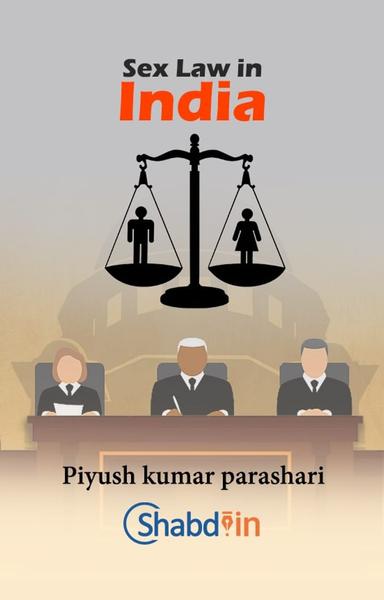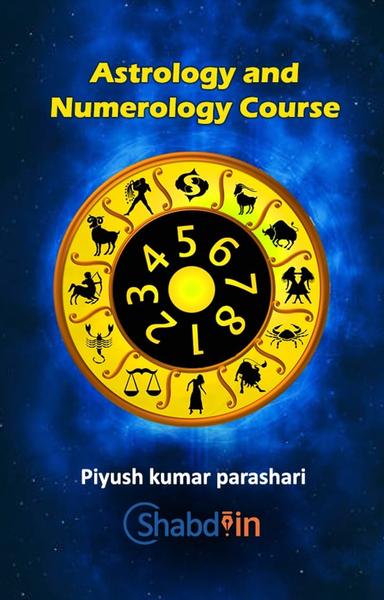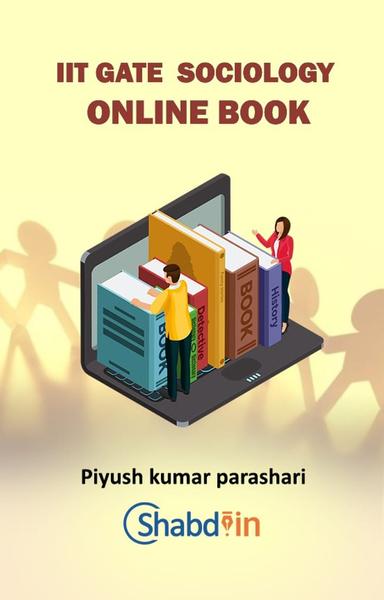Points To Ponder
16 Apr 2022
Points to ponder
Women studies
Topics covered
1.Women and Gender
2.Feminist Research
Women studies is different frrom gender studies Women studies is
interdisciplinary subjectand it is very important for in academics for
understandingic problem.In 1893 New Zealand was the first country who give
right to vote for women.
After that in 1910's several countries like USA,Russia and Germany gave right
to vote forWomen. India gave right to vote at the very beginning of the making
of the constitution.
We have very big problem of adverse child sex ratio and anaemia along with
undernourished children
National family Health survey is the main source of data regarding health of
womenChild wasting and child stunting is also the main problems in India It is
fourtunate that we are going to achieve Total fertility rate 2.1 target.
TFR 2.1 is the replacement level of population.that is our population will
stabilizeand than stationary population we will haveIt means the population
growth rate will be zero in future .Women studies is very dynamic subject
Because this subject is more objective rather than subjective.Case studies are
very important for deeper learning.
The scope of research is very wast in Women studies . It is because now we
Women study centers and research facilities for the research. This book is
intended to give the basic conceptual understanding of the subject rather than
thefactual data .
It is advised to learn by heart all details in the book along with UN Women
web site updatesand please visit regularly Ministry of women andChild
development.
Women of India may file complaints on National Women Commission website or
NationalHuman Right Commission website. 1098 is child help line number .POCSO
act 2012 is totally dedicatedto children .
Now we have Act for the transgender Transgender persons( protection of rights)
act (2019) under the Ministry of Social Justice and Empowerment
There is provision for National level institutionalSetup for the welfare of
transgender personsDistrict Magistrate is the certificate issuing authority for
the transgender people.
Libral feminism: problem: inequality Solution:emancipation Approach:equality.
Radical feminism:problem: oppression Solution:Libration Approach:Difference
Above both feminism are called modern feminism.
Post modern feminism:problem:marginalization Solution:IntegrationApproach:
diversity
First wave feminism: political rights .1900 -1920s.
Second wave feminism:Social rights .1920 -1960s
Third wave feminism:Individual personal rights . 1980 - 2000sOr In some books
it was 1990-2000s
Fourth wave feminism: Right to privacy 2012 onwards with the tool of social
media and internet.#me too movement.
Men's feminism: focus on men's rights.
Ecofeminism: women's way is the best way it is a part of radical feminism.
Socialist feminism: class and patriarchy is the problem.men and women should
work together for solution.Classless society is the solution.
Marxist feminism:patriarchy is the problem.
Cisgender:opposite sex attraction.
Transgender:same sex attraction.
Queer sex: Complex sexual identity it is umbrella term.mental and hormonal are
the main parameters for identification of personal sexual identity.
Intersex:complex sexual identity based on genital and chromosomal
structure.genitals may be complex or underdeveloped .
Feminine and masculine are expressions. Men and women are mental identity.
Male and female are sexual identity.
Sex is to biology .and Gender is to society.
Lesbian: female- female.
Gay:male-male
Bisexual:sexually attracted to both make and female. Pensexual: sexually
attracted to all.
Chromosome structure:Male:XY.
Female:XX.
Transgender/Shemale:XXY or XXXY.
Prostitution is known as the oldest profession. In India organized
Prostitution is illegal while at individual level not illegal.
Pornography is illegal in India.
USA:Pornography is legal except Navada state.Canada: Pornography is legal.
Germany: concept of sex tax exists. It means Prostitution is legal in Germany.
Constitutional Rights of women:Article:
15(1):no discrimination based on sex.
15(3):Affirmative discrimination in favor of women by state.Also for children.
16(2):No discrimination in employment. 21-A: Right to education .
23(1): Human trafficking and forced labour banned .it is also for children.
24:No child labour for up to age fourteen year.
39(a):Right to adequate means of livelihood for men and women.
39(d):equal pay for equal work.
39(e):humane conditions for work.
42:Maternity relief.
51-A(e): ensure dignity of women.
243D(3):one third Seats reserved for women at every Panchayat.
243D(4): one third seats reserved for offices of chairpersons in the
Panchayats at each level.
243-T(3)and 243T(4): One third reservation at every municipality and offices
of chairpersonsin municipality (percentage not fixed decided by respective
state government) respectively.
Concurrent list items:
Both union and state government can make laws on items which lies in
Concurrent list .
Criminal law.
Criminal Procedure.
Preventive detention.
Marriage and divorce;infants and minors,adoption;wills,intestate and
succession; joint family and partition.Transfer of property other than
agricultural land.
Actionable wrongs.
Truest and Trustees.
Civil procedure.
Vagrancy;nomadic and migratory tribes.
Economic and social planning.
Population control and family planning.
Trade union;industrial disputes and labour disputes.
Social security and social insurance;employment and unemployment.
Welfare of labour.
Price control.
Factories.
Electricity.
News papers, books and printing presses.
Vital statistics including registration of birthsand deaths .
Relief and rehabilitation of person displaced from their original place
residence by reason of setting up of Dominions of India and Pakistan.
11 th Schedule constitution of India items:Article(243G).
Domain:- local government (rural)Family welfare. Women and child development.
Social welfare.Markets and fairs.Adult and non -formal education. Libraries.
Cultural activities.Poverty alleviation programs.Health and sanitation.Welfare
of the weaker sections.Maintenance of community assets.12 th Schedule
:article(243W).
Urban local government. Women not mentioned explicitly in all 18 items.
National Commission for women.Act 1990.Established:1992.Headquarter:New Delhi.
One chairperson.
Five members and one member-secretary. At least one from scheduled caste .and
One from scheduled tribe.
Tenure:3 year.Power:civil court power.
National commission for protection of child rights act 2005.Established:2007.
One chairperson .
Six members at least two should be women.
Tenure :3 year Maximum two Tenure only.It has the power of civil court.
Adoption in India .
Juvenile Justice Amendment Act 2015.
District Magistrate/Addtional District Magistrate, Executive head at District
level.
Central Adoption Resource Agency (CARA).
Child Adoption Resource Information and Guidance system (CARINGS).
India has ratified Hague convention 1993 regarding Adoption.
Means of knowledge. Method of
1.Tenacity(superstition)
2.Authority
3.Intuition(philosophy)
4.Science( Inductive, Deductive)
SDG goals.
1.No Poverty
2.zero Hunger
3.Good Health and well-being
4.Quality Education
5.Gender Equality
6.Clean water and sanitation
7.Afordable and Clean Energy
8.Decent work and Economic Growth
9.Industry, innovation and Infrastructure
10.Reduced Inequality
11.Sustainable Cities and Communities
12.Responsible Consumption and Production
13.Climate Action
14.Life below water
15.Life on Land
16.Peace and Justice strong Institutions
17.Partnerships to achieve Goal.
Total 169 targets by 2030.
SDG Index for India.
NITI AYOG.Index score;1.Aspirant: 0-49
2.Performer: 50-64
3.Front Runner-65 -99
4.Achiever:100
Major legal Rights:Protection of women from Domestic violence act 2005:Three
is provision of protection officer in this act for prevention and immediate
support and relief for the abused.
Magistrate also has power to give relief to the abused. All women are covered
under domestic violence.
ImmoralTraffic prevention Act 1956.Indecent Represention of women
(prohibition) Act 1986.
Commission of Sati (prevention )Act 1987.Dowry Prohibition Act 1961.
Sexual Harrassment of women at workplace Act ,2013
Workplace:All places except Agricultural workers and Armed forces.
Annual compliance is mandatory for all companies under companies act 2013.
Source: Vishaka guidelines given by Supreme Court.
Local complaints commitee(LCC):five member .Internal complaints
committee(ICC): four member.
Chairperson always women.At least two women plus third party(NGO)/expert .ICC
is applicable where employees are equal or more than ten ,on the other hand if
employees are less than ten than LCC is applicable.
Reports send to District officers /Employer with in sixty days. (Committees
must do enquiry within ninety days before preparing report).
Employer/District officer must take action with in sixty days. Finally police
complaint is the logical end.
Aggrieved woman can file complaints with in three months .this limit may be
extended to three months more.
It also provides safeguards against false or malicious charges.
50000 penalty or cancelation of license of firm/company in case of non
compliance by firm/company under this act 2013.
Indian penal code sections for crimes.
375:Definition of rape.
Oral sex crime.
Anal sex crime.
Manipulation of genital is also crime.376:punishment for rape.
376:minimum ten years of imprisonment (rigorous)376A:20 years to death penalty
forVegetative state of survivor.
376AB:20 years to death penalty. Below 12 years of age.
376B:2 to 7 years (marital rape) .Sexual intercourse during judicial
separation.
376C: 5 to 10 year (statury rape).Person in authority with colleague.
376D: 20 years to life time imprisonment. (Gang rape).
376DA: same as 376 D .Gang rape below 16 years of age.
376DB: Life imprisonment to death penalty.Below 12 years of age.
376E:Repeated offender. Life time imprisonment to death penalty.
366: kidnapping of woman. 10 years imprisonment.
366A:procuration of minor girl below 18 years of age;10 year imprisonment.
366B: Import girl from foreign country. Below the age of 21 years .10 years
imprisonment.
493:False promise of marriage and do cohabitation. 10 years imprisonment.
377:unnatural penetrative sex with anyone. 10 years imprisonment. Lesbian sex
not crime in India.Incest sex is also not crime in India.
354: outrage the modesty of woman.1 to 5 year imprisonment.
354A:sexual Harrassment. Up to 3 years imprisonment. Colored remarks.up to one
years imprisonment.
354B:Disrobe the woman. 3 to 7 years.
354 C:Voyeurism. 1 to 3 years first time.3 to 7 years for second time offense.
354 D:Stalking. 3 to 5 years imprisonment.
312 :miscarriage by quack.
3 to 7 years imprisonment.
313 :miscarriage without consent .10 years to life time imprisonment.
509:Eve teasing .3 years imprisonment. Non Compoundable crime:No monetary
settlement.Compondable offense.Pecuniary fine is levied only.
Bailable offense:Right to bail exist.Non Bailable offense:Bail may be given by
sessions court .Bail is not a matter of right.
Cognizable offense: Arrest without warrentNon cognizable offence:No arrest
without warrent.Burden of proof: who will prove he /she is innocent in trial.
Medical Termination of pregnancy amendment act 2021.Abortion up to 20
weeks:one doctor.Abortion up to 24 weeks: two doctor. Beyond 24 weeks: medical
board.It have Gynecologist,Radiologist Sonography specialist. Other expert
nominated by government.Unmarried girl can opt for Abortion.
Sex Ratio in India;Female population ×1000/ Male population.
Child sex ratio( 0 to 6 years):female population (0 to 6 years)×1000/ male
population (0 to 6 years).
Total fertility rate for stationary population.2.1.
Maternal Mortality Rate:Death of mother during child birth per 100000 live
births.
Neonatel death :Death with in 28 days after birth.Pre neonatel death:death
with in 7 days after birth.
Late neonatel death Death with in 7 to 28 days after birth.
Post neonatel death Death between 28 days to one yearAfter birth.
Still birth: death with in 24 hours after birth.
Infant Mortality:(0-1) year death.
Net reproduction rate(NRR):It means replacement of current mothers by new
mothers .NRR =1 stable population.
NRR is more than one = increasing population.
NRR is less than one= decreasing population.
Population growth rate=(A-B)×100/ B.Where ,A= current population. B=Base year
population.
Law of Marriage:1.Endogamy: within the group. 2.Exogamy: outside the group. We
do religious endogamy.We do gotra/ clan exogamy.
Law of marriage:1.Levirate marriage. Marriage with brother in law when husband
died.Practiced in north India.
2.Sororate Marriage: Marriage with sister in law when wife died. Practiced in
north India.
Cross cousin marriage. Marriage between the offspring ( kids)of brothers and
sisters.Parallel cousin marriage Marriage between the offspring ( kids)of
brothers or sisters.
Cross cousin practiced in central India and South India .it is taboo in North
India.Parallel cousin marriage not practiced .among Hindus. Levirate and
Sororate marriageare taboo in South India.
Ancient nomenclature of marriage. Anulome vivah: High caste man with low caste
woman. Not taboo in India
Pratilome vivah:low caste man with high caste woman. It was forbidden in India.
Polygamy and Polyandry.Polygny(commen term)One male with multiple female
partners is called Polygamy .One female with multiple male partners is called
polyandry .it has two types:fraternal means all males are brothers .Non
fraternal all males are not brothers.Monogamy. One male one female partner at a
given time.
Research philosophies:1.Radical humanist.
2.Radical structurelist.
3.Objective.
4.Subjective.
5.Interpretative.
6.Funtionalist.
7.Pragmatic.
7.Idealist .
9.Humanist.
10.Positivist.
11.Post Positivist.
12.Constructive.
13.Deconstructive.
Research Approaches;1.Inductive.
2.Deductive.
3.Mixed.
Research Strategies;
1.Action research.
2.Ethnography.
3.Grounded theory.
4.Narrative research.
5.Memoirs.
6.Monograph.
7.Archival research.
Data collection method.
1.Cross sectional data.
2.Longitudinal data .
Evaluation methods.
1.Diagnostic.
2.Formulative.
3.summative.
Ethics types.
1.virtue Ethics: person based.
2.Consequential/ Taleological Ethics :
Result Based.
3.Deontological: Action Based.Types of variables 1.Distcrete :Nominal variables
Ordinal variablesIntervel variables:They have the properties ofboth Nominal and
Ordinal.
2.Continous :Ratio variables
Correrelation :Means strength between variables Domain (0-1)Value more than
0.75Strong Correrelation. Value=1 perfect Correrelation Value=0 no Correrelation
Value=0 to .25 very weak Correrelation
Regression:
Nature between variables.
1.Positive Regression Y= mx+c.
2.Negative Regression Y=-mx +c.
m= slope of the linear line.C= Constent term
X= independent variable
Y= dependent variable
Analysis of Variance(ANOVA)
Dependent variable under study is Metric (Intervel or Ratio)
Independent variable =NonMetric Nominal.
2 way ANOVA
Dependent variable on
Independent variable are two.
3 way ANOVA
Dependent variable:oneIndependent variable:Three
N way ANOVA.
Dependent variable:1
Independent variable:n
MANOVA:
M= Multiple Dependent variable:More than one.
Classification of Research.
1.Pure or fundamental.
Making ,Reinterpreting and Relaxing Assumptions.
2.Applied Research. Evaluation and Action. Immediate solution.
3.Conclusive Research. Descriptive and Diagnostic study.Experimental study
also.
4.Exploratory Research. Historical Analysis and Case study.
Important Socio-Religious Movements of 19th Century.1.Young Bengal Movement
(1827).Place:Calcutta Founder:Henry vivion DerozioTo live and die for truth
Belief in Human reasonIdeas of liberty, fraternity.
2.Brahmo Samaj(1828)Calcutta Raja Ram Mohan Ray was founder.Monotheism and
goodness of almighty GodOpposed idol worship.
3.Rahnumai Mazdayasanan Sabha(1851)Founders:Dada Bhai Naoroji,Naoroji
Furdonji,J.B watcha and others.Emancipation of parsi women, western Education
among parsi.
4.The veda samaj (1864)k sridharalu was founder.Place:Madras .To stop caste
distinctions and evil social customs.
5.Radha Swami Movement(1861) Place :AgraTulsi Ram.Supremacy of Guru.
6.Prarthna Samaj(1867)Maharashtra M.G. RanadeAtma Ram panduranga Bhandarker.
Admission of converts from other religions.Removed evil social customs.
7.Arya Samaj (1875) Bombay Swami Dayanand SaraswatiOpposed :polygamy, pardhah
system,Practice of satiChild marriage, castism Child marriage.
8.The Aligarh Movement (1875)Syed Ahmed khan ,advocated Female education
OpposedPardhah system Polygamy Easy divorce .
9.The Theosophical Society 1875, USAMadam Balavatsky Col Olcott.Universal
Harmony and brotherhood
10. Ramkrishna Mission1887-1889Varanager and Vellore Swami Vivekananda
Upliftment of women.
11.Indian Reform Association1870, Calcutta Keshav Chandra SenOpposed:child
marriageImprove status of women.
12.Lakhitwadi1880'sGopal Hari DeshmukhUpliftment of women
13.Society for social reforms ,(1878) MadrasKandukuri PantuluWidow remarriage
Female educationOpposed hiring dancing girl.
14.Mahakali Pathshala 1893 ,Calcutta Maharani TapaswiniFemale education
15.seva sadan1885 Bombay Behramji M.MalabariWomen Upliftment.
16.Natinal Social Conference 1873 Bombay M.G.Ranade ,Ramabai Ranade
Emancipation of women.
Associations for women,
1.Bharat Mahila Parishad
2.Arya Mahila Samaj
3.Sri zarthosti Mandal
4.Bharat Shri Mahamandal
5.women's Indian Associations
6.National Council of women for India
7.All- India women 's conference
Source of knowledge in Indian system of logic.1.Direct Perception Accepted by
all schools of thought .
2.Inference Accepted by all except charavaka or lokayata
3.AnalogyAccepted by all except charavaka, Buddha , vaisheiska,samkhya,
yog,Jaina and jamini.
4.Apprehension Accepted by all except the above mentioned in analogy and Nyaya
Philosophy.
5.Non Apprehension Accepted by vedanta and kumaril Bhatta.
6.verbal testimony Not accepted by charavaka, Buddha and Veisheisha.
Contribution of Feminist Thinkers. 1.Dora Montefiore.
A Bundle of Fallacies
Some words to Socialist women
The Future of woman
The English woman
The evolution of sex
Items of Interest
Items of Interest from other countries
Ladles and the Suffeage
The position of women in the Socialist Movement
What Every Socialist woman should know
Sudden Jolt Forward of the world
Womanhood Suffrage
Labour party women 's conference
2 .Alexandra Kollontai
On the history of the movement ofWomen workers in Russia
International women's day
The labour of women in the evolution of the economy
Prostitution and ways to fighting it
Sexual Relation and class struggle
Red love
Thesis on communist Mortality in the sphere of Marital Relation
3.Virginia wolf
A room of one's own
Three Guineas
4.simone de Beauvoir
The second sex
5.Evelyn Reed
The Matriarchal-Brotherhood Sex and Labour in Primitive Society
The myth of women's Inferiority
A study of Feminist Mystique
Women:caste, class or Oppressed sex
Feminism and the The female Eunuch
Is Biology woman 's Destiny
Women's evolution:From Matriarchal Clan to Patriarchal Family
Entrepreneurship :
the process of making money, earning profits and increase wealth posing
characteristics such as risk taking. management, leadership and innovation .The
term entrepreneurship is a complicated term and gives various meaning depending
on tne situation .concept of entrepreneurship was first established in the
1700s, and the meaning has evolved ever since. entrepreneurial motivation is
one of the most important factors which accelerale the pace of economic
development by bringing the people to undertake risk bearing activities.
Four Key Elements of Entrepreneurship:
Innovation
Risk taking
Vision
Organising skills
One who undertakes an endeavour is an Entrepreneur. Most successtul
entrepreneurs share certain personal attributes including: reativity,
dedication, determination, flexibility. leadersnip, passion, self-confidence
and smarts.
What leads a person to strike out on his own and start a busines:
Doing What You Love
Independence and Freedom
Recognition and Self Fulfilment
Income Potential
Own Boss
Innovation
Each entrepreneur personality type can succeed in the business environment if
it is true to character. identitying strong traits is essential and can act as
a compass for the business.
The terms Entrepreneur and Manager are considered same but these have diferent
meanings altogether. These cannot be used interchangeably.
Intrapreneurship is a combination of entrepreneurship and management skils.
Intrapreneurship is the practice of entrepreneurship by employees Within an
organization.
Social entrepreneurs:Social entrepreneurs are people with innovative Solution
to society's most social problems.
They are ambitious and persistent, Tackling major social issues and offering
new ideas for wide-scale changes.
Source
Book list:1.Constitution of India
2.Indian penal code
3.Sociology for by Nitin Sangwan (IAS)
NCERT 11 th.12th for conceptual foundation.
Research Methodology Book IGNOU
WOMEN STUDIES modules IGNOU.
MA Sociology IGNOU STUDY material.
Surprise Gift to all
What's up me9359161195
For full Numerological Analysis of your life
Send me. Real Date of Birth
Time of Birth
Place of Birth
Questions
I reply you .










